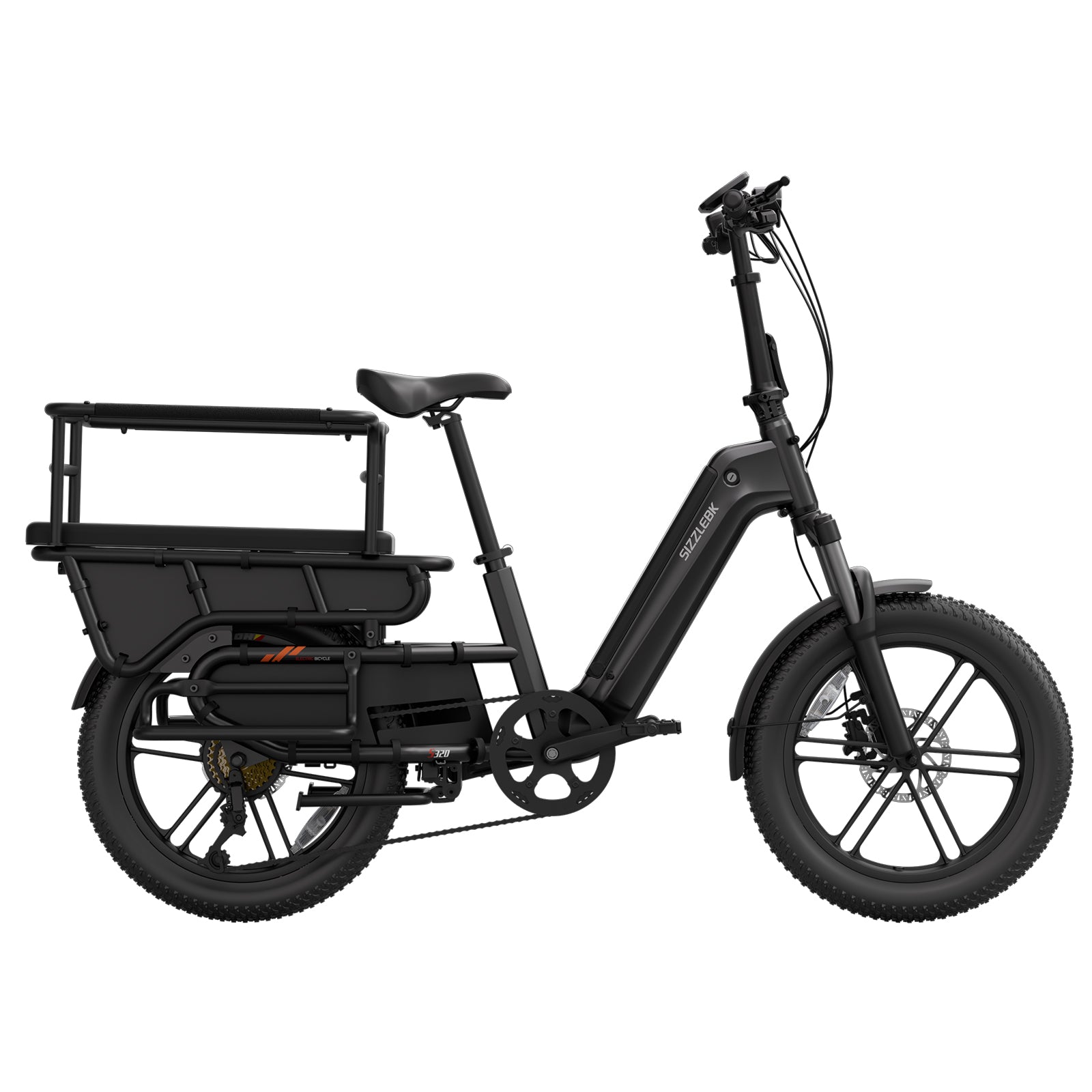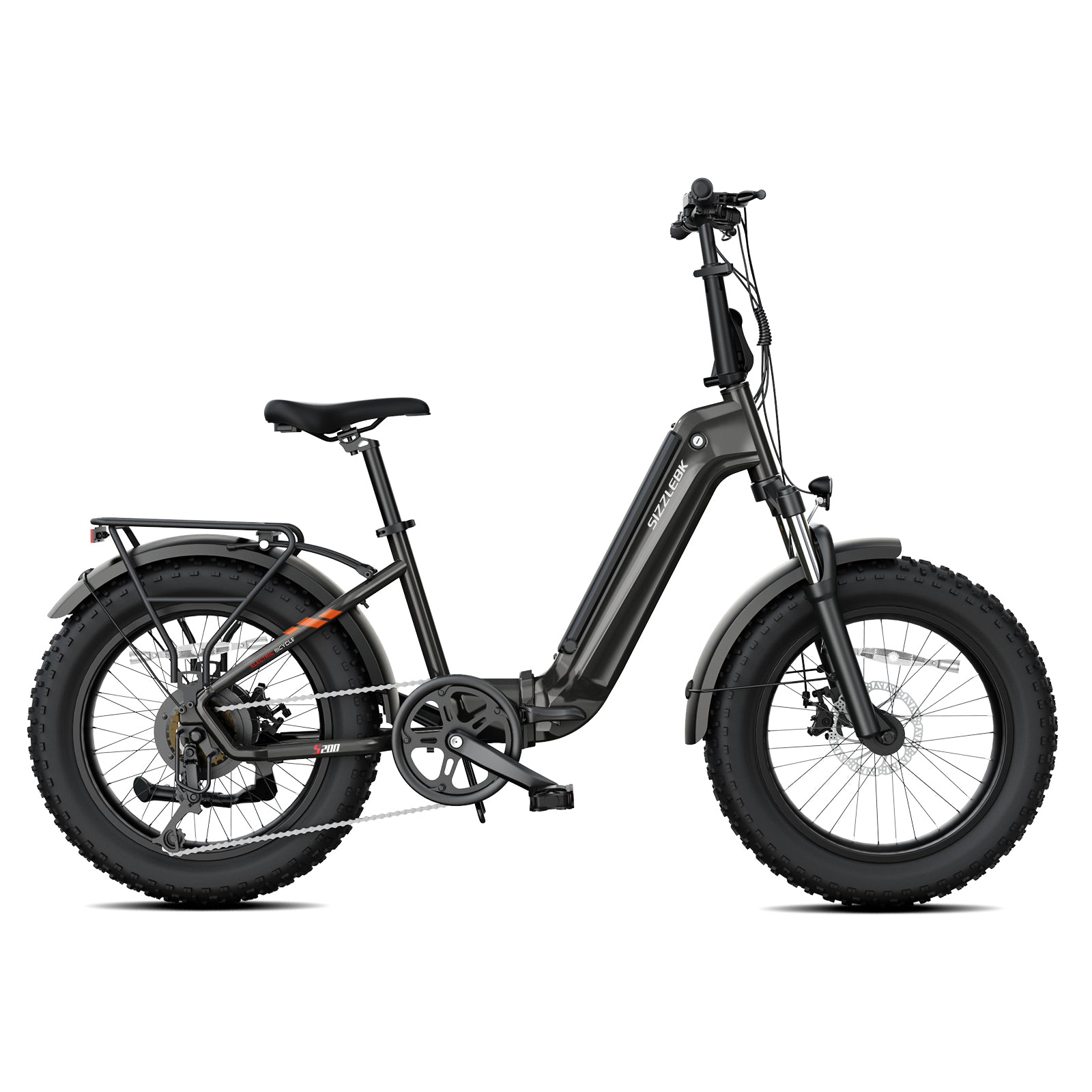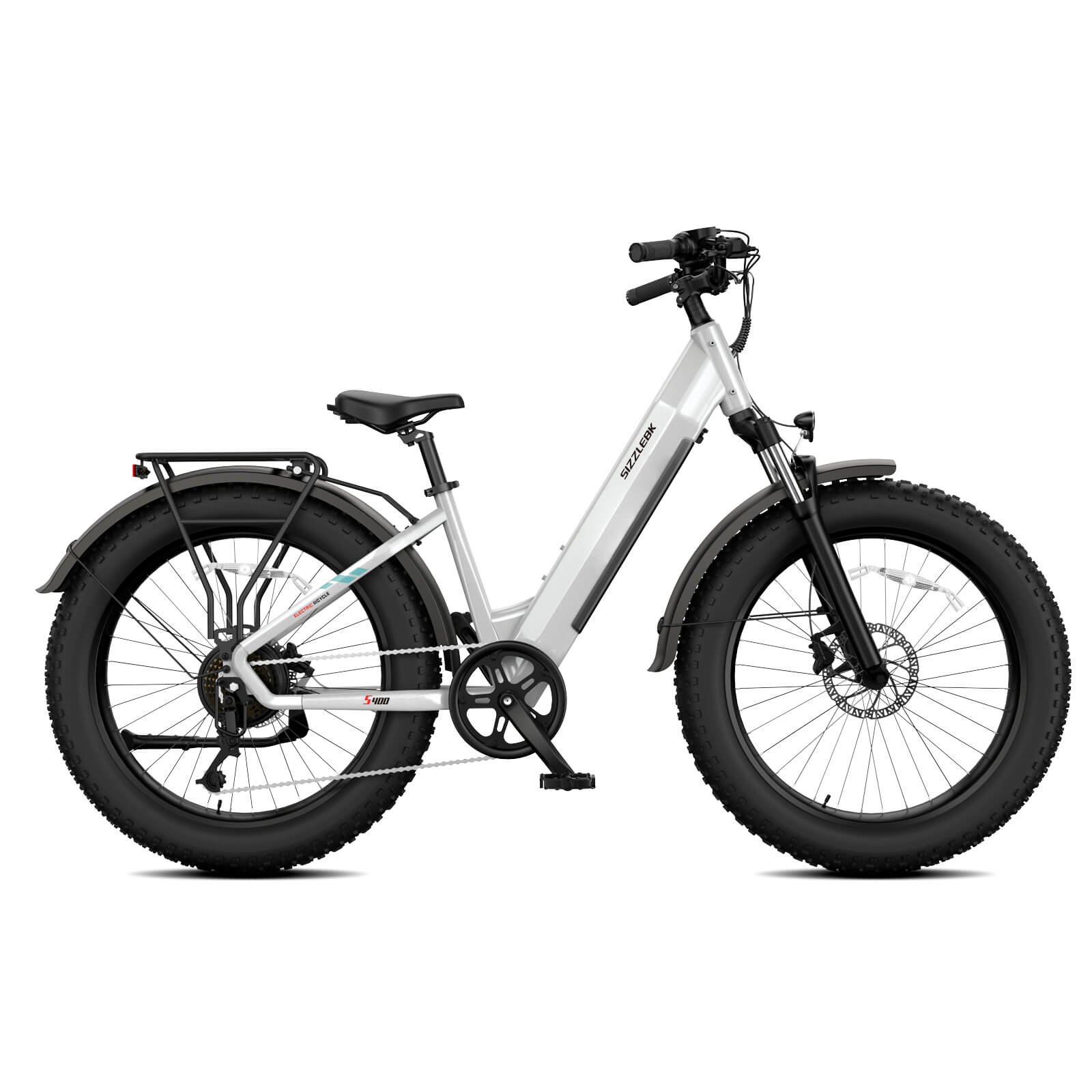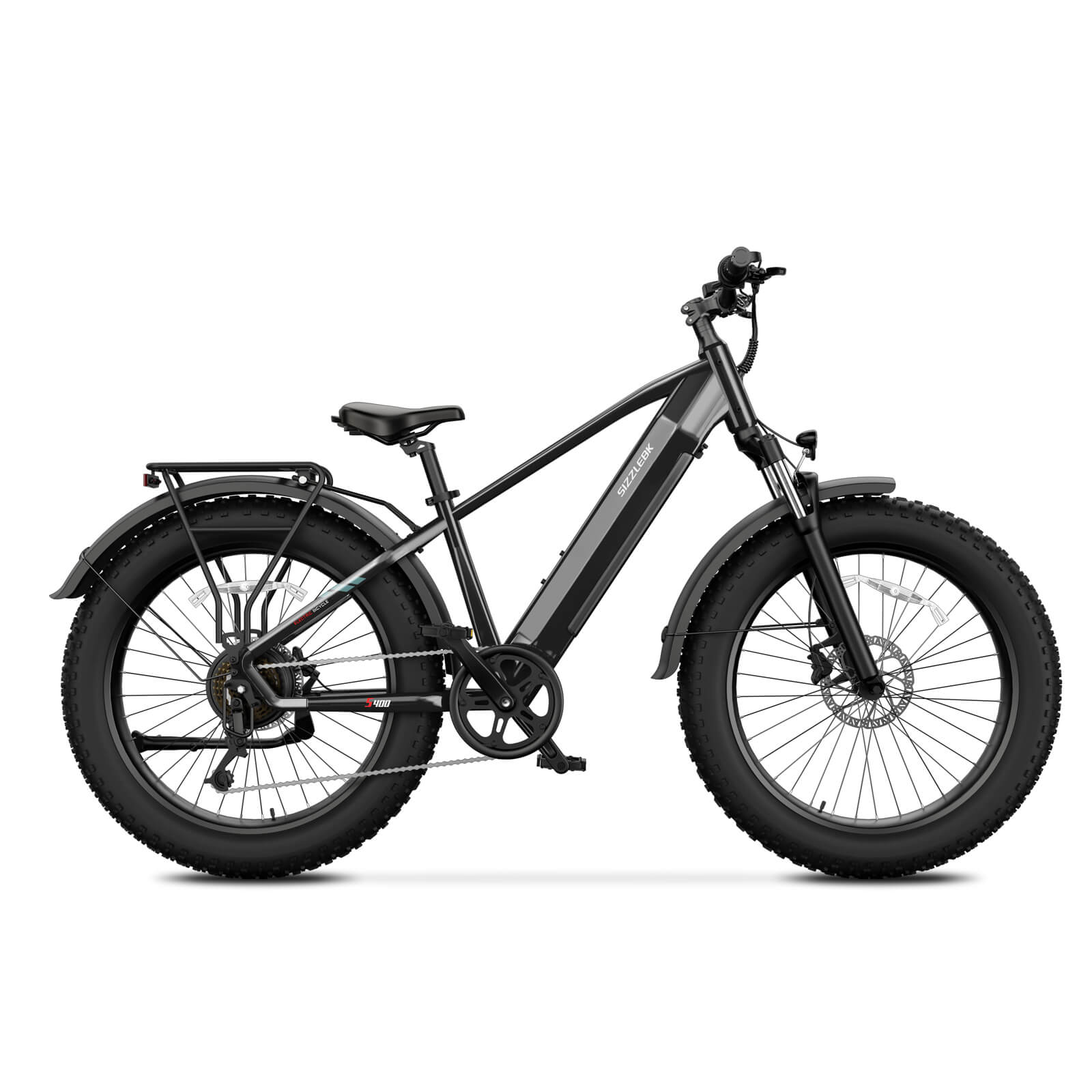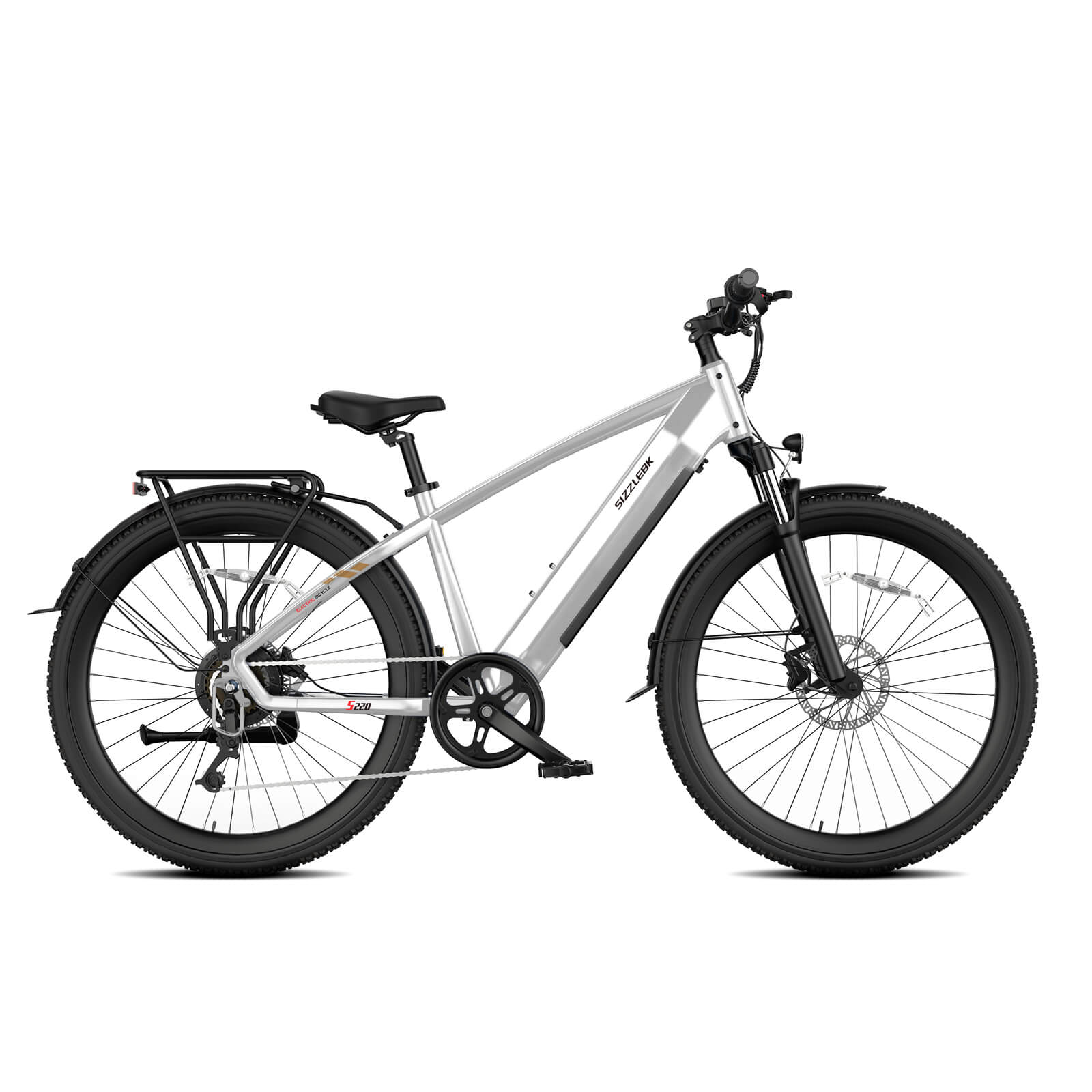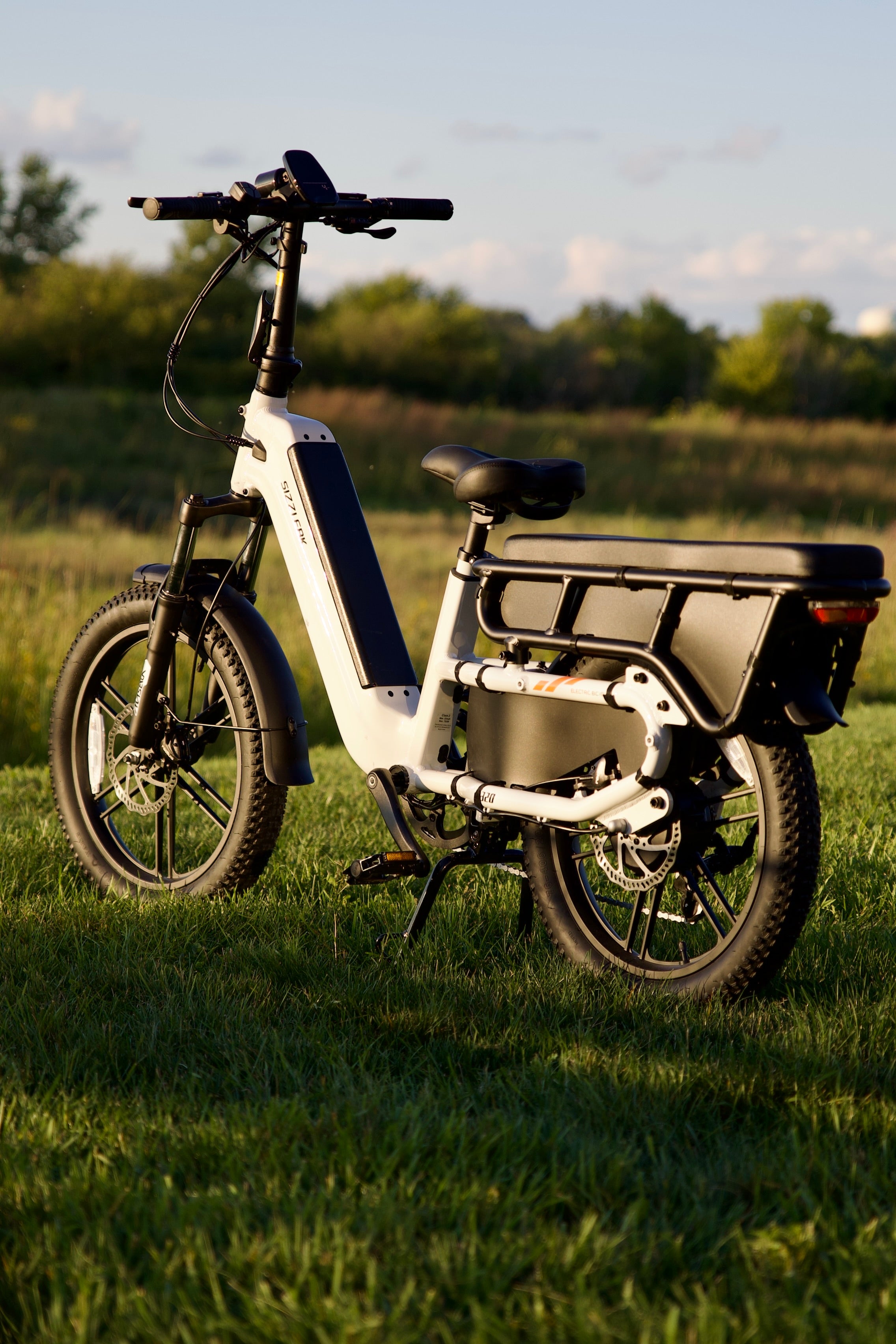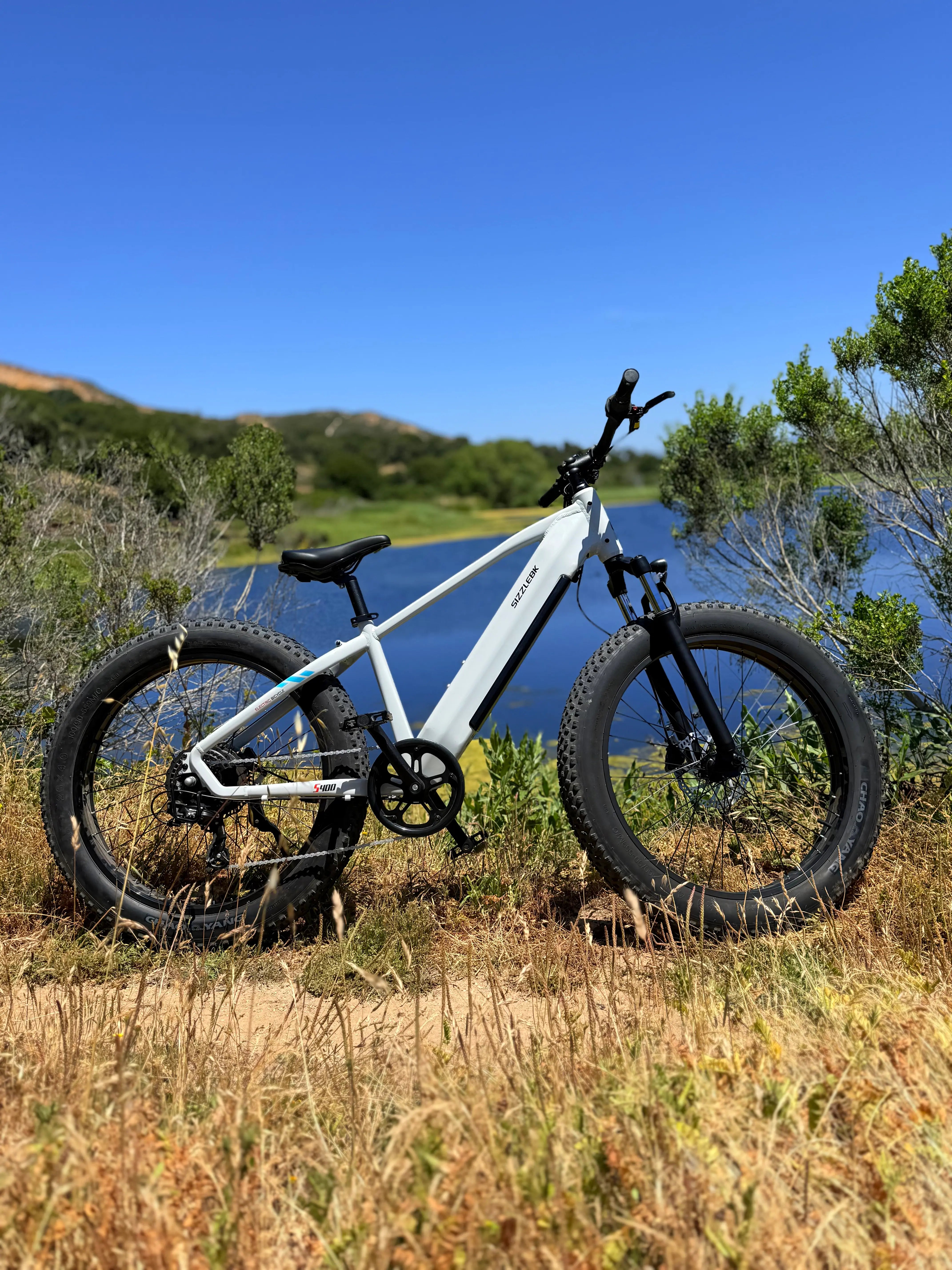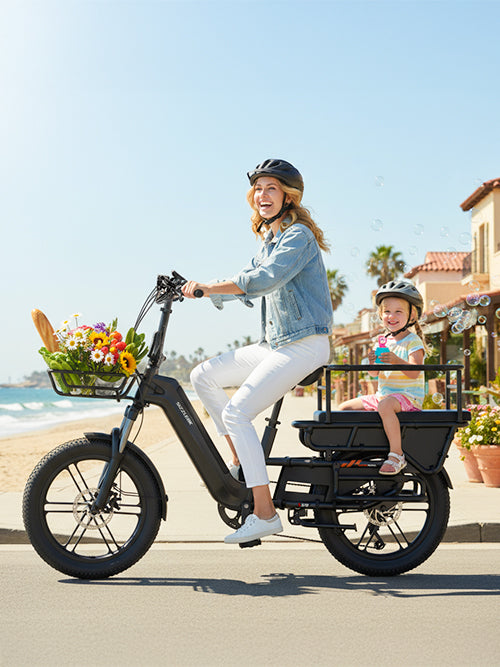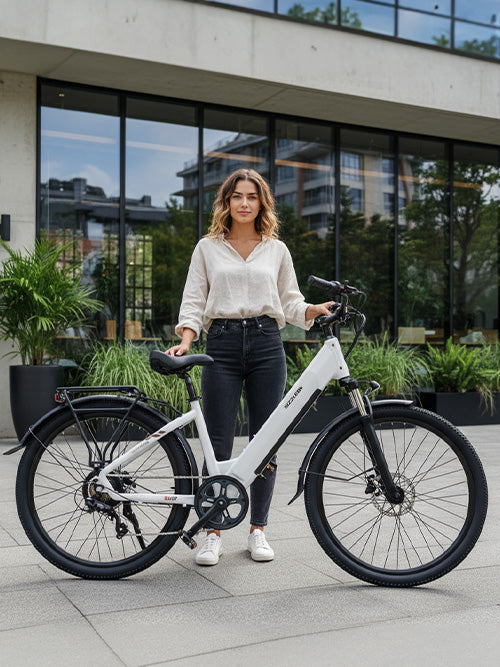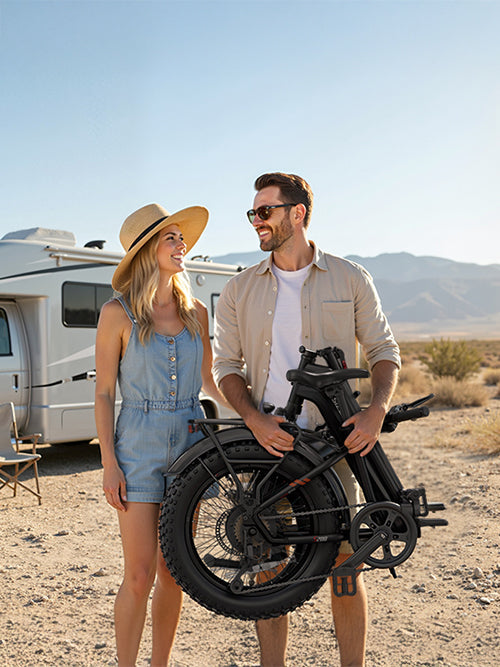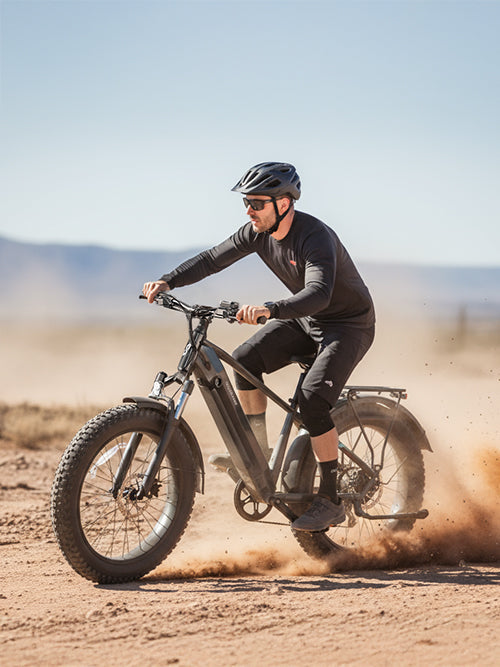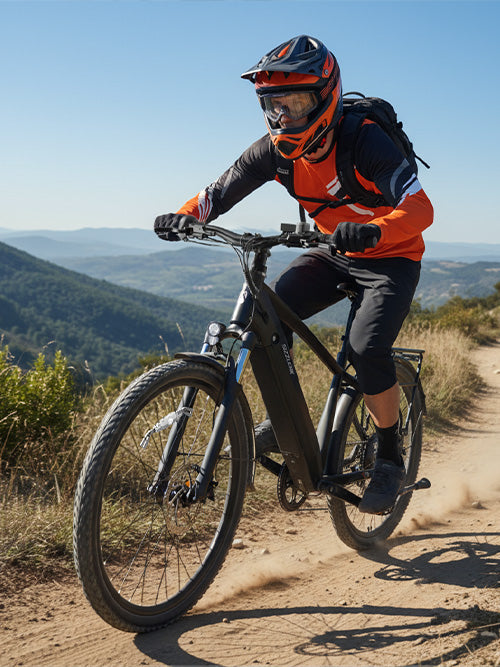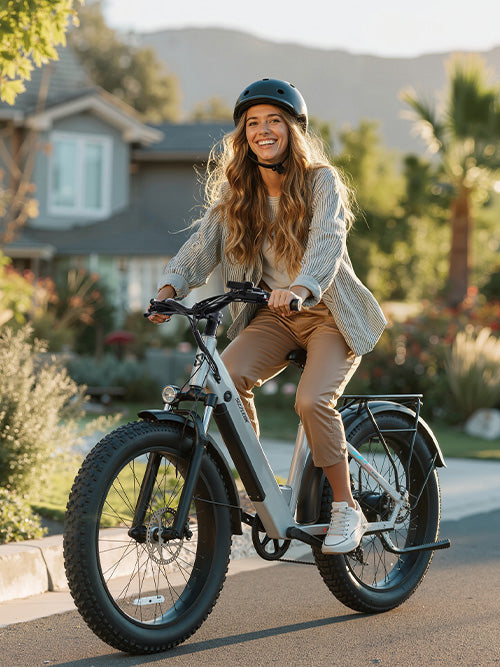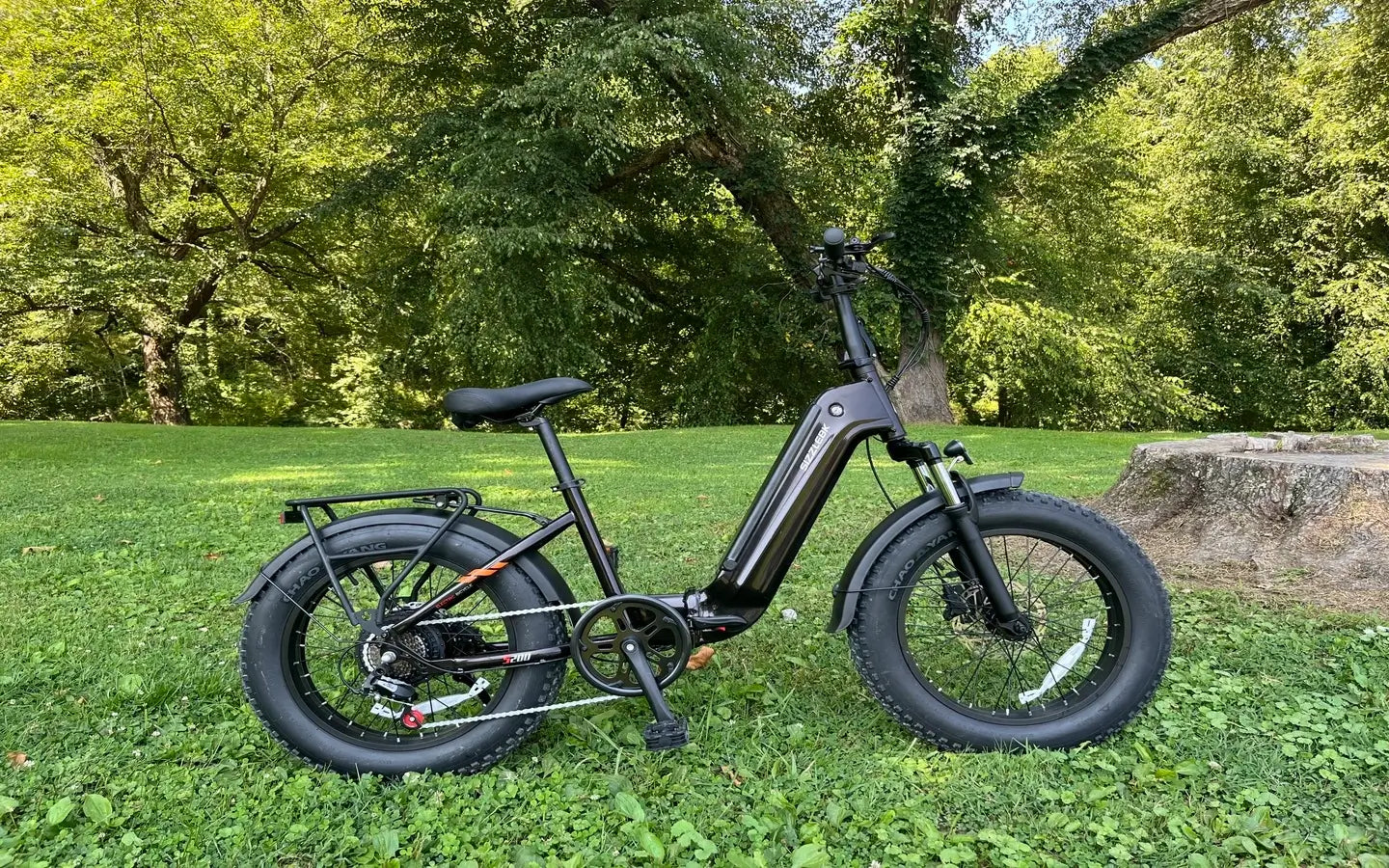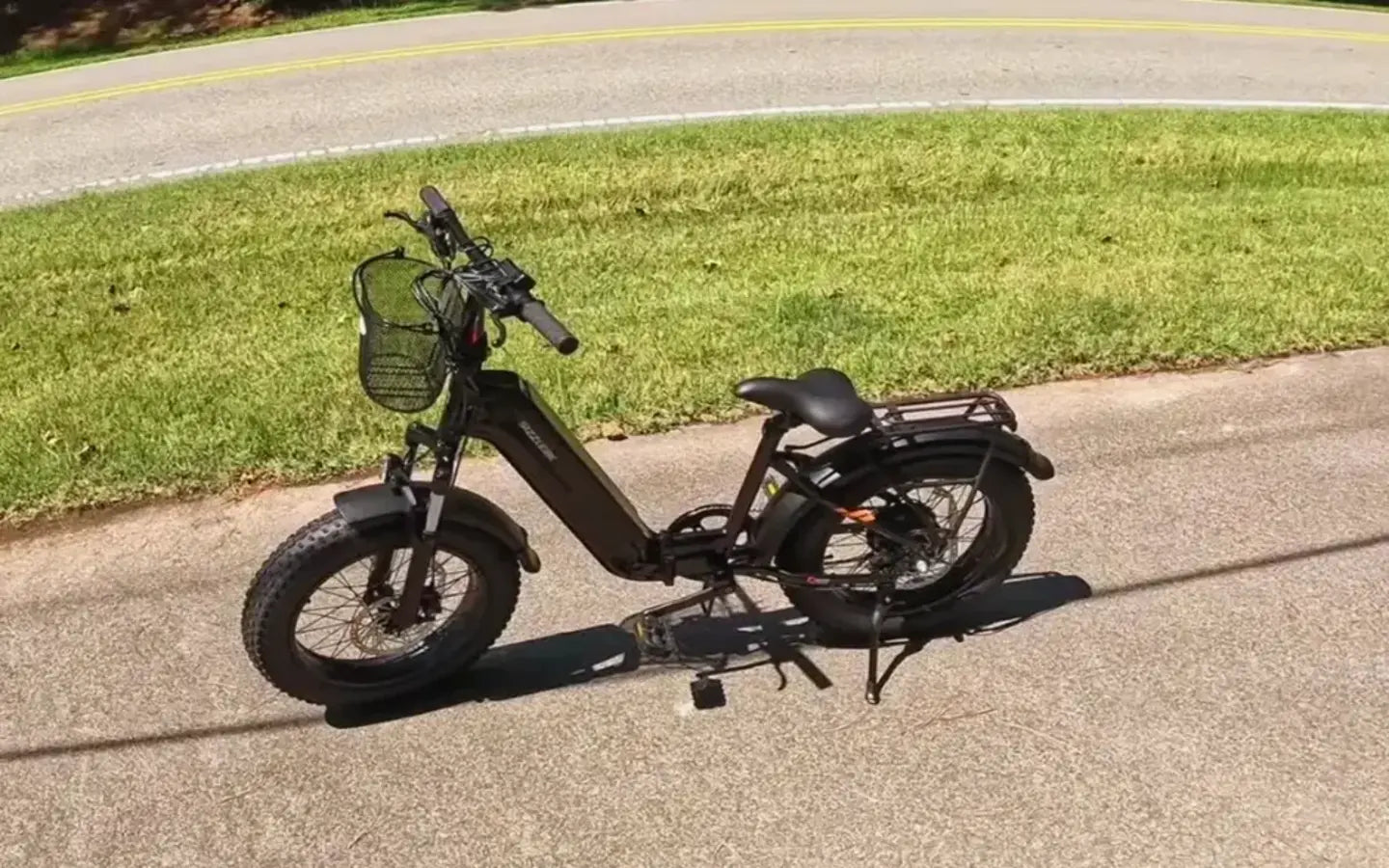While the tires may seem unimportant to your e-bike, they actually play a huge role in performance, comfort, and safety. Electric bicycles are heavier and faster than regular bicycles, and typically are ridden for much longer distances. This impacts the pressures of the tires.
Electric bikes come as commuter e-bikes, fat tires designed to go off road, cargo e-bikes and trike e-bikes etc, and if you can maintain the electric bike tire, you may reduce the chances of flats, blowouts, and uneven wear - saving you valuable time, money, and headaches.
In this article, we will look at what you can do to keep your ebike tires in shape: how to inflate your ebike tires properly, how to check for damage, how to prevent slow leaks, and how to avoid blowouts.
Why Electric Bicycle Tires Need Special Attention
Electric bikes differ from traditional bikes in several important ways:
Heavier weight due to motor and battery
Increased speed, which consequently increases friction and heat
Longer rides which cause additional wear and tear over time
Because of all of this electric bike tires tend to wear out faster and are more susceptible to air loss or damage if not cared for properly. Consistent care of the overall condition of tires can substantially lengthen the life of your tires and safely maintain your riding.
1. Check Your Tire Pressure Regularly
Maintaining correct tire pressure is crucial for both performance and safety. Underinflated tires can lead to reduced handling, shortened battery life, and an increased risk of blowouts. Likewise over-inflated tires can result in blowouts or reduced traction.
How Often Should You Check Tire Pressure?
Ideally, you should check your ebike tires once a week - or better yet before you headed out for any significant ride. Even a small amount of pressure drop can alter the ride.
How to Find the Right PSI
Look on the sidewall of your electric bike tire—you’ll find a recommended pressure range. Most standard e-bike tires fall between 30–60 PSI, while ebike fat tires typically require lower pressure, around 5–30 PSI depending on terrain.
Tips for Inflating:
Use a bike pump with a pressure gauge
Inflate slowly, checking the gauge often
For fat tire electric bikes, reduce pressure for off-road terrain and increase for pavement
Don’t exceed the maximum PSI listed
Quick Tip: Over time, tires naturally lose a small amount of air—even without a puncture. Checking tire pressure regularly should be part of your daily routine.
2. Preventing Flat Tires and Leaks
A flat tire can ruin any ride. While no tire is 100% immune, simple habits can greatly reduce your risk.
Common Causes of Flats:
Sharp debris (glass, nails, thorns)
Low tire pressure leading to “pinch flats”
Worn tread exposing the inner tube
Improperly seated tires
Prevention Tips:
a) Keep Tires Properly Inflated
Low pressure allows the bike tire to deform more, making it easier for sharp objects to puncture it. Keeping your ebike tires at the right PSI strengthens their ability to resist intrusions.
b) Check Tires Before the Ride and After
Just quickly check for cut pieces staying inside, cuts, or some peculiar wear. If you notice a small piece of glass or metal, ouch it out with a little bit of patience before it goes deeper.
c) Avoid Riding Over Hazards
Glass shards, potholes, and construction debris are the leading causes of punctures. If you can't avoid them entirely, slow down to reduce impact pressure.
d) Monitor Tire Wear
Worn electric bicycle tires are more prone to blowouts. When the tread is thin or the tire casing shows, it’s time to replace them.
3. Dealing with Slow Leaks
Not every tire issue is a sudden flat. Sometimes your electric bike tire loses pressure slowly over hours or days. These leaks are harder to detect but just as dangerous if ignored.
How to Check for a Slow Leak:
Inflate the tire to its proper PSI.
Let the bike sit overnight.
Check the pressure the next day.
If it’s significantly lower, you may have a leak.
Finding the Leak:
Visual check: Look for bubbles using soapy water around the valve and tire surface.
Listen for hissing: A faint hiss often reveals the leak location.
Fixing the Problem:
Tighten the valve core if loose.
Replace the inner tube if punctured.
Reseat the tire if it's not aligned properly.
Tip: Carry a small patch kit or spare tube for longer rides.
4. Knowing Blowouts and How to Avoid Them
A blowout is an uncontrolled tire failure that generally occurs in the event of overinflation, aged or damaged tires or high-speed encounters with sharp edges. E-bikes can be more dangerous than standard bicycles because of higher speed and weight.
Best Practices for Preventing Blowouts
Don't exceed the max PSI: Pumping up your tires beyond the max psi limit to steam-roll speed, fewer flats, and lower rolling resistance can lead to failure. It is best practice for tire safety to stay within the specified range on tire sidewalls.
Watch for high impacts: Slow down when approaching curbs, potholes, or steps.
Replace old tires: Rubber doesn’t hold up over time as you expect it to. Rubber gets hard and cracks. If your tires are getting older than two years old and have surface cracks then it's time to replace them.
Check the sidewalls: Tire blowouts often occur due to a weak or damaged sidewall.
5. Tire Maintenance Routine: A Weekly Checklist
Maintaining your ebike tires doesn’t take long. Here’s a quick weekly checklist to keep them in good shape:
Check air pressure
Inspect for debris or sharp objects
Look for cracks, bulges, or cuts
Spin the wheel and check for wobbles
Clean off dirt, mud, or sticky residue
Make sure the valve is secure and sealed
For ebike fat tire owners, also check that tire pressure matches your terrain. Use lower pressure for loose surfaces like sand or snow, and higher pressure for pavement to reduce rolling resistance.
6. Adjusting for Terrain and Weather
Your electric bike's tire setup should suit your surroundings. Follow these guidelines to adjust your tire setup:
Urban roads: Higher pressure = smoother and more efficient
Gravel or dirt: Slightly lower pressure helps with traction
Snow or sand: Fat tire electric bikes, lower pressure puts your tire more in contact with surface.
Wet conditions: Slow down and check how 'fiat' your tread is for grip.
Note of caution: Cold causes air to contract and lowers the PSI of your tires. Always return to check tire pressure in the winter cold.
7. Know When to Replace Your Tires
No matter how well you maintain them, electric bicycle tires don’t last forever. Here are signs it’s time to replace:
Tread is worn flat
Repeated punctures
Sidewall is cracked or bulging
The tire feels dry or brittle
You’ve ridden over 2,000–3,000 miles on them
Replacing tires at the right time is far cheaper—and safer—than dealing with a blowout or a long walk home.
Final Thoughts
Your tires are the foundation of every ride. By investing just a few minutes a week into basic care, you can:
Avoid flats and blowouts
Improve battery efficiency
Increase riding comfort
Extend the lifespan of your ebike tires
Tire maintenance is one of the best things you can do to protect your investment no matter whether you're riding a skinny commuting e-bike or a sturdy fat tire electric bike. And of course keeping your tires maintained helps keep you safe on the road.
Ready to explore more rugged terrain with confidence? Check out our latest fat tire ebikes—built for power, stability, and adventure.
